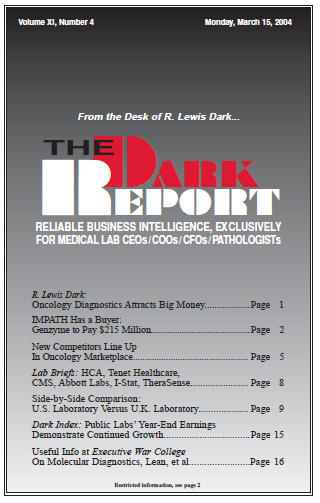CEO SUMMARY: Do clinical laboratories in any of the world’s most developed countries have a performance advantage that makes them “best of breed?” Recently, a laboratory in the United States and a laboratory in the United Kingdom had the opportunity to evaluate their financial, productivity, and quality performance against each other. The results were unexpected—and …
Side-by-Side Comparison: U.S. Lab Versus British Lab Read More »
To access this post, you must purchase The Dark Report.


